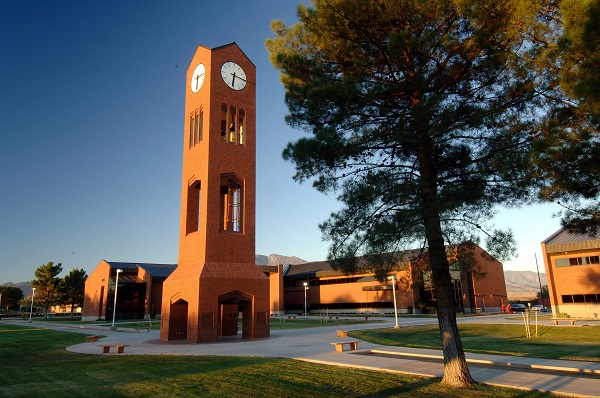THATCHER, Ariz. – When Aaron Burk stepped into Eastern Arizona College’s science lecture hall on Monday, he faced a room of empty seats, and a screenful of students eager to learn.
At EAC, the COVID-19 pandemic has added new dimensions to Burk’s role as professor of biology.
He and his fellow professors have shifted to remote instruction for the remainder of the spring semester due to the COVID-19 outbreak. Their students have been asked to stay at home.
“As an educational facility, we don’t feel like we can put anybody’s education on hold,” said Burk. “Instead of shutting down, we’re trying to use this as an opportunity to ramp-up and provide even more for our students, even though it may be in a non-traditional format for us.”
Based on recommendations from public health officials, EAC has required all instruction to move to remote learning.
“The majority of our faculty have already been using a learning platform for in-person classes called Canvas,” he said. “We’re familiar with that, and so are many of our students. Canvas streamlines digital tools and allows us to set up discussion boards and live lectures.”
EAC has kept students, faculty, and staff well-informed throughout the COVID-19 outbreak with a web page dedicated to breaking news and information on how to get help with College services.
“Even though there are no confirmed cases of COVID-19 on campus, it’s so important for our students to not come back after spring break,” said Todd Haynie, EAC president.
For classes requiring hands-on learning, EAC’s instructors have been asked to move as much material online, and limit in-person meetings to 10 or fewer, using strictest social distancing practices.
“Obviously, there will be some disruptions,” stated Haynie. “But if we work together, we can make this successful.”
Other professors at EAC are using a wide variety of teaching tools to connect remotely with students. Instructors in the Math Department are using MyMathLab to deliver lectures, homework assignments, and chapter tests, and Zoom remote conferencing to conduct virtual office hours. While video conferencing complicates large-scale choir rehearsals, music professors have replaced listening and memorization assignments on Canvas, and compressed individual videos of students singing to create a virtual choir performance.
“I want to thank our faculty and staff,” said Haynie. “The work they have done to make our classes remote and help curtail the spread of COVID-19 has been nothing short of remarkable.”
Video Credit: Chaz Ornales, EAC









